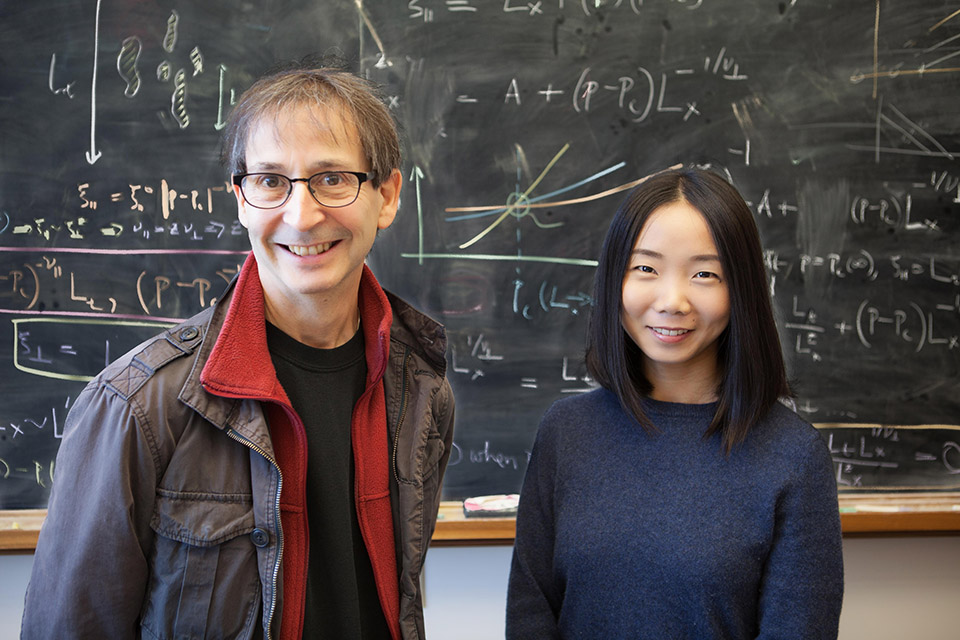-
A Virus-Bacteria Coevolutionary 'Arms Race' Solves the Diversity Paradox
January 31, 2018 / Posted by: Miki Huynh
Nigel Goldenfeld (left) and Chi Xue (right) have developed a model that reveals an 'arms race' between bacteria and viruses that may help to solve the diversity paradox. Source: UIUCA remarkable biodiversity exists on Earth. When many species are competing for the same finite resource, a theory called competitive exclusion suggests one species will outperform the others and drive them to extinction, limiting biodiversity. But this isn’t what we observe in nature – a phenomenon known as the diversity paradox.
Chi Xue, graduate student in physics at the University of Illinois at Urbana–Champaign (UIUC) and Nigel Goldenfeld, Swanlund professor in physics at UIUC and PI of the NASA Astrobiology Institute at UIUC, have developed a stochastic model that accounts for multiple factors observed in ecosystems, including competition among species and simultaneous predation on the competing species. Using bacteria and their host-specific viruses as an example, the researchers show that as the bacteria evolve defenses against the virus, the virus population also evolves to combat the bacteria. This “arms race” leads to a diverse population of both and to boom-bust cycles when a particular species dominates the ecosystem then collapses—the so-called “Kill the Winner” phenomenon— and may yield a possible solution to the diversity paradox.
The paper, “Coevolution Maintains Diversity in the Stochastic ‘Kill the Winner’ Model” is published in Physics Review Letters.
A press release is available through the Carl R. Woese Institute for Genomic Biology at the University of Illinois at Urbana-Champaign.
Source: [Physics Review Letters (via UIUC)]
- The NASA Astrobiology Institute Concludes Its 20-year Tenure
- Global Geomorphologic Map of Titan
- Molecular Cousins Discovered on Titan
- Interdisciplinary Consortia for Astrobiology Research (ICAR)
- The NASA Astrobiology Science Forum Talks Now on YouTube
- The NASA Astrobiology Science Forum: The Origin, Evolution, Distribution and Future of Astrobiology
- Alternative Earths
- Drilling for Rock-Powered Life
- Imagining a Living Universe
- Workshops Without Walls: Astrovirology